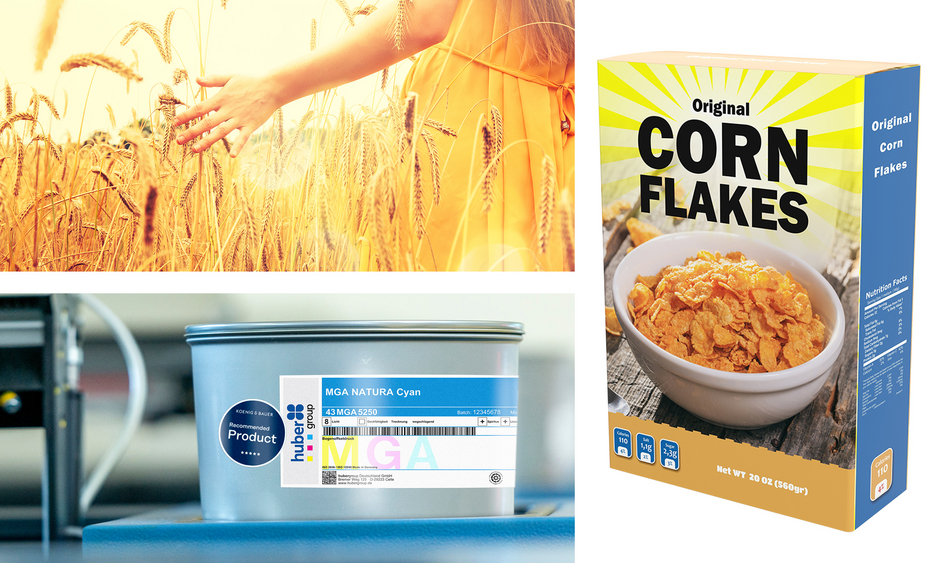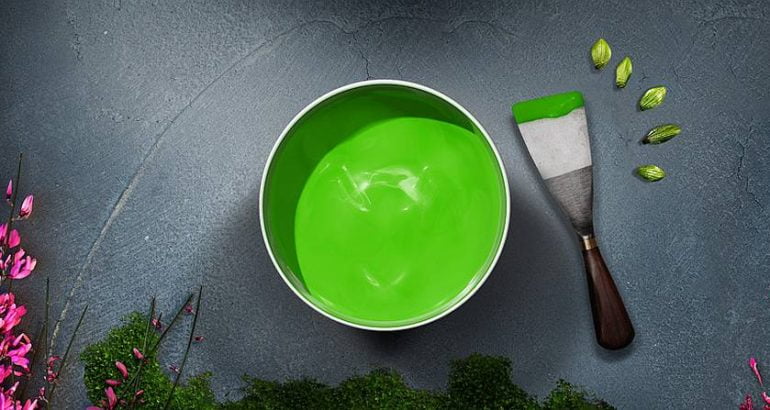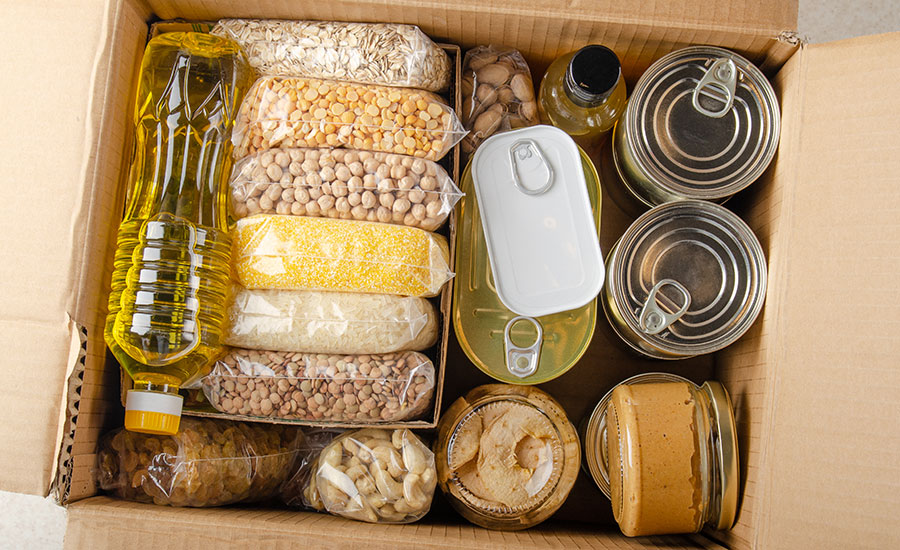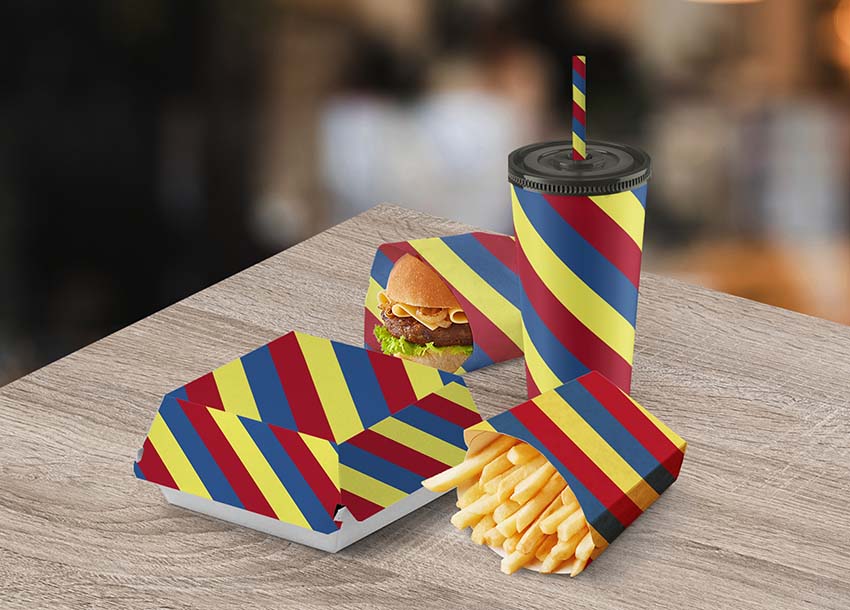
Under certain conditions, UV initiators or photo-filters on the food packaging can get into packaged food and then it can become unsafe for humans.
Main Functions of Packaging
Packaging must ensure the preservation of all nutritional properties of packaged food, to protect it from various mechanical-physical, chemical and microbiological influences, as well as to attract consumers.
Packaging must also contain all the necessary food information as well as images or graphics that will attract and retain already loyal customers of a particular product. Packaging should definitely evoke pleasant emotions that support the purchase and consumption of products.
However, if the packaging itself looks poor, unattractive, faded or damaged, we may get the impression that packaged food itself is like that, although this may not always be true.

Packaging Inks and Varnishes
In order for the packaging to reflect the quality of the product, printing inks and varnishes are used that support the quality of the product. The print on the packaging is always on the side that is not in contact with food. Inks and varnishes for packaging contain many different substances, but they must not be transferred to packaged food.
Daylight i.e. its part of the spectrum, UV radiation, can often change the color of the packaging and then the product itself becomes unattractive to customers. That is why compounds called UV initiators or photo-filters are used and are almost always used for printing on packaging.
These compounds are very useful because they allow the colors on the packaging to be stable or not fade while standing on shelves, in warehouses, in households, during the entire shelf life of the product itself. The most often used compounds are from the benzophenone group.

However, under certain conditions, UV initiators or photo-filters can get into packaged food and then it can become unsafe for people.
Plastic and Glass – Perfect Barriers
Plastic and glass are a good example of a barrier through which it is almost impossible for these compounds to pass into food. Even when labels are affixed to plastic or glass packaging, they are excellent materials that prevent the migration of any substances into the interior of the packaging.
However, paper and cardboard are not a good functional barrier if they do not have a layer of plastic on the surface that is in contact with food. That is why it is very important that paper and cardboard packaging have a print from which harmful compounds do not migrate.

Benzophenone and 4-methyl benzophenone are the most commonly used compounds as UV filters, in printing inks for food packaging. In 2009, following the discovery of 4-methyl benzophenone in breakfast cereals, the European Commission asked EFSA (European Food Safety Authority) for urgent advice on the risks to human health regarding these chemicals.
EFSA Rules and Regulations
Initially, adopting a cautious approach due to limited time and available data, EFSA pointed out that a health problem cannot be ruled out for some children who regularly ate 4-methyl benzophenone-contaminated breakfast cereals at the highest reported levels.
However, in their more comprehensive risk assessment published in May 2009, EFSA experts concluded that there are no health risks from short-term consumption of 4-methyl benzophenone-contaminated breakfast cereals at reported levels.
The EFSA assessment is based on exposure and toxicological data for a similar substance to benzophenone for which the CEF Panel has determined a tolerable daily intake (TDI) of 0.03 mg per kilogram of body weight.
However, the EU later identified several compounds that act as UV filters, limiting their migration to 6 mg / kg of food, and limiting benzophenone itself to 0.6 mg / kg of food (COMMISSION REGULATION (EU) No 10/2011 of 14 January 2011 on plastic materials and articles intended to come into contact with food).

In 2020, EFSA also issued an opinion on another compound from the benzophenone group (BTDA) and concluded that it was not safe for humans and limited its migration to a maximum of 50 μg / kg of food.
But a few years earlier, the EU had passed a regulation on good manufacturing practice for materials and articles in contact with food (COMMISSION REGULATION (EC) No 2023/2006 of 22 December 2006 on good manufacturing practice for materials and articles intended to come into contact with food) and in Annex 1 clearly gave instructions to manufacturers on how to handle printing inks and printed surfaces in the production of semi-finished and finished food packaging.
It is noted that printed surfaces must not be in contact with food or leak substances into food in quantities greater than allowed.
Also, during production, the printed surface must not come into contact with the surface intended for contact with food in order to avoid imprinting of ink.
However, except for foils that are produced in the form of a “roller” and thus wound until the formation of packaging, printed packaging in the form of containers is usually packed after production and storage “one inside the other”.
In that way substances are transferred from the printed, outer surface of one container to the inner surface of another container, and so later with time transferred inks and UV filters are found in the food.
Recycled Plastic or Cardboard Food Packaging
The problem with printing inks and UV filters is later added to the safety of food packaging made from recycled plastic or cardboard.
If printed plastic or cardboard is recycled, it is impossible not to find these harmful compounds in the material itself later, and then they can very easy pass into food.

That is why for the production of all materials and items for food it is safest to use non-recycled raw materials or raw materials that are from approved recycling procedures.
Since compounds from the group of benzophenones are harmful to human health and their toxicity and impact on health, as well as metabolism, are still being investigated, it is extremely important that they are not found in the food.